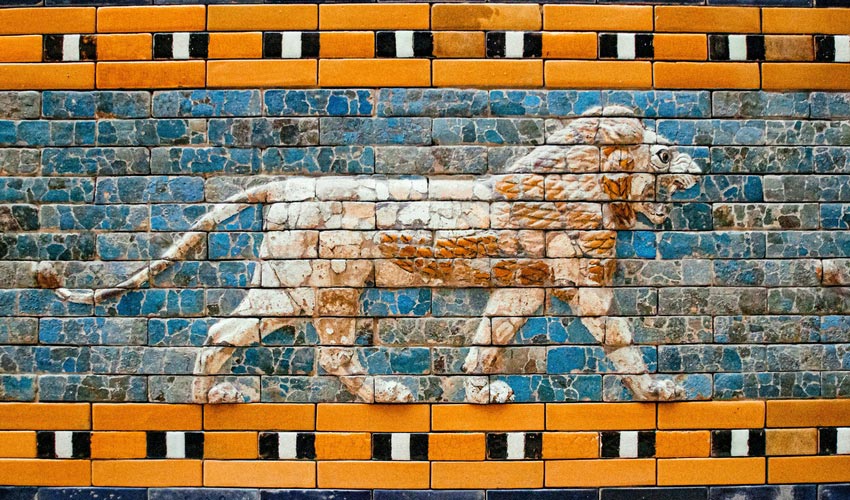The Hanging Gardens of Babylon – Where Were They?
It is the age-old debate: were our ancestors just a bunch of daydreamers weaving tales of dragons and gods, or were they actually on to something? It's like a never-ending game of "truth or fiction" with a side of historical whiplash. Today, let's dive into the minds of our predecessors, shall we? Picture this: ancient humans sitting around a campfire, gazing up at the stars. They didn't have smartphones to wiki every question into oblivion, so they had to make sense of the world in their own mischievous way. Can't blame them for trying, right?
So they spun fantastical stories, linking gods to thunderbolts and sea monsters to whirlpools. It was their way of explaining the unexplainable, like why the sun rose and set or why earthquakes tended to ruin their picnics. These myths were the heroes of their intellectual battles against the unknown. But hold your sceptical horses, dear explorers! While our ancestors might have had their heads in the clouds, they were also capable of incredible feats. Look at the pyramids of Giza or the Great Wall of China. You can't just chock those up to creative daydreaming. They were more than capable of building wonders that would make even modern construction crews scratch their heads.

So yes, it's a contradictory dance our society does. We dismiss myths as ancient hogwash, yet marvel at the genius behind ancient architecture and artwork. It's like praising someone for their epic dance moves while denying that they ever owned a disco ball. We can't just flip-flop our opinions depending on the mood. Perhaps, just perhaps, there's a middle ground here. Maybe those myths and legends hold snippets of truth buried beneath layers of whimsy. After all, ancient civilizations didn't exactly have a publishing industry to fact-check their stories. It's possible that some of our world's extraordinary tales were, in fact, exaggerated versions of real events. Like an ancient game of telephone gone wild.
So, let's put on our rose-tinted glasses and embrace the wonders of our ancestors' minds. They might have been a little imaginative, but they also left behind a legacy that still bewitches us today. It's a delicate balance, appreciating their achievements while acknowledging that dragons probably weren't roaming the streets. In the end, the myths and legends that have withstood the test of time remind us that imagination and curiosity have always been an integral part of our human experience. So, raise your glass to the dreamers who turned the mundane into the extraordinary, even if they occasionally got carried away with their storytelling. Cheers to our past and the mysteries that continue to tickle our minds!
Now let’s focus on today’s topic, the Hanging Gardens of Babylon! It is like the enigma of ancient wonders, the juicy secret that researchers have been trying to uncover for centuries. Can you believe that out of all the Seven Wonders of the Ancient World, this is the only one whose location remains an unsolved mystery? Talk about being the black sheep of the family! You see, historians and experts have been frolicking through piles of ancient texts, scratching their heads, and debating fiercely about where on earth these mythical gardens once stood. And yet, here we are, drowning in a sea of researched studies, each one claiming to have unravelled the truth, and still, no consensus among these bright minds. It’s like watching a never-ending wrestling match where no one can agree on a winner. Frustrating, isn’t it?

But wait! A glimmer of hope emerges from the prestigious Oxford University, where an academic claims to have the answer that has eluded us for so long. Maybe the secret behind the Hanging Gardens of Babylon is finally about to be unveiled! Or so we hope. Let's dive into the most popular theory while we're at it. Picture this: the ancient city of Babylon, a bustling metropolis ruled by the mighty King Nebuchadnezzar II, strutting his stuff between 605 and 562 BC. Now, ol' Nebby, as I like to call him, had a homesick wife named Amytis of Media, who just couldn't get over the fact that Babylon lacked the plant life of her homeland. So what does a besotted king do? He goes ahead and builds an entire garden, suspended in the air like some sort of horticultural magician, just to please his lady love. Now, you might be wondering, where the heck did this slap-bang-bam gardening paradise exist? Well, the loud and proud theory suggests that it was indeed in Babylon itself. Can you imagine that? It was right under everyone's noses, hidden away in plain sight. Sneaky, right? We're talking about a garden that soared above the city, dazzling all onlookers and leaving them with neck cramps from gawking upwards. It was a true spectacle of horticultural audacity, my friend.
But, before you get too excited, I must bring you back to reality. Even though this theory tickles the fancy of many scientific folk, it still lacks the smoking gun evidence that truly seals the deal. We're left thirsty for more concrete proof, digging into ancient texts and scraps of information in search of that final missing puzzle piece. So here we are, still lost in the confusion, scratching our heads and pondering the whereabouts of these blooming gardens. The quest for the real location of the Hanging Gardens of Babylon continues, my friend, like a never-ending treasure hunt. But hey, maybe one day, when we least expect it, the answer will finally fall into our laps and we can all rejoice like ecstatic plant nerds.
Until then, let's raise our glasses to the Hanging Gardens of Babylon, the elusive wonder that has kept us entertained and baffled for centuries. May the truth reveal its hidden petals and finally put this ancient mystery to rest. Cheers!! The belief is reinforced by the account given by Greek geographer Strabo in the 1st century BC, who vividly describes the magnificent Hanging Gardens of Babylon:
“It consists of vaulted terraces raised one above another, and resting upon cube-shaped pillars. These are hollow and filled with earth to allow trees of the largest size to be planted. The pillars, the vaults, and terraces are constructed of baked brick and asphalt. The ascent to the highest story is by stairs, and at their side are water engines, by means of which persons, appointed expressly for the purpose, are continually employed in raising water from the Euphrates into the garden.”

The Hanging Gardens of Babylon, oh what an enchanting marvel they must have been! Picture it: a lush oasis of greenery, soaring high above the grand city of Babylon. These mythical gardens, said to have been a testament to human ingenuity and beauty, unfortunately did not withstand the test of time. Their demise, like an ancient mystery, has left scholars scratching their heads and pondering their very existence. Evidence of their destruction is scattered and elusive, leading to conflicting theories about their fate. Some reports suggest that neglect, war, or even a powerful earthquake brought about their downfall. This leaves us with a perplexing puzzle, as the precise location of the Hanging Gardens remains shrouded in uncertainty. Doubt whispers in the ears of many, questioning whether these enchanting gardens were nothing more than a figment of ancient imaginations.
However, for every perplexing puzzle, there is a brilliant mind determined to find the missing piece. Enter the intrepid Dr. Stephanie Dalley from Oxford University’s Oriental Institute. Armed with a passion for ancient texts and an ability to decode cuneiform, she embarked on a quest spanning over two decades. Her mission: to unravel the secrets of the Hanging Gardens and bring them back to life in our collective imagination. Dalley's extensive research led her to a fascinating revelation: the Hanging Gardens were not the work of the Babylonians, but rather their neighbours and nemeses, the Assyrians. Under the rule of their monarch Sennacherib, these Assyrians crafted this awe-inspiring masterpiece. Dalley's theory stands as a beacon of knowledge, shining brightly amidst the fog of confusion.
What clues led her to this ground-breaking conclusion, you may ask? One of the primary pieces of evidence was none other than Sennacherib's Prism, a cuneiform treasure housed in the esteemed British Museum. This remarkable prism provided a glimpse into the life of Sennacherib, ruler of a sprawling empire stretching from Turkey to Israel. And amongst its tales, it spoke of a palace and garden that left all who beheld it in awe. The whispers of those long gone echoed through the prism's text, revealing its secrets to Dalley and the world. But that's not all! Another piece of the puzzle, a bas-relief from Nineveh, was discovered and lovingly transported to the British Museum. Etched into the very stone, this discovery depicted Sennacherib's palace complex and a wondrous garden suspended in mid-air on astonishing terraces. It was as if time had paused to capture the ethereal beauty of this sublime creation.
So, it seems that the Hanging Gardens of Babylon may have found their true identity and location in the resplendent kingdom of Assyria. Dr. Stephanie Dalley's research and her book, "The Mystery of the Hanging Garden of Babylon," have breathed new life into this ancient tale. Through her diligent efforts and her ability to decipher the secrets etched onto dusty tablets, she has bestowed upon us the gift of knowledge and storytelling. Although the actual gardens themselves may be whispers in the wind, their legacy endures. The Hanging Gardens of Babylon beckon us to imagine a world where nature and architecture intertwined in harmony, where beauty defied gravity, and where the human spirit sought to create wonders that would captivate generations to come.















